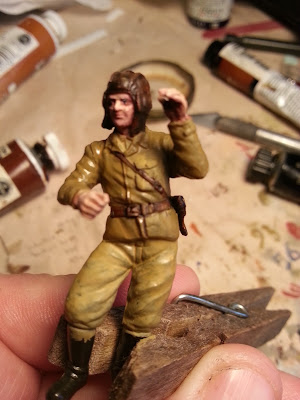Welcome to Dave's Model Workshop. I've set up this blog to share my hints, tips and techniques for making better plastic models.
I hope that this blog will help you elevate your plastic scale model making. If you're currently happy with your models, but you feel there is room for improvement, this is for you. If you feel like your models are currently say a 5 out of 10, then the hints and techniques I will share with you will get you to an 8 out of 10. I'm not a Master Model Maker - we've all seen those masterpieces which make you say, "Wow, how did he do that?" I do not clean up at local model show awards (partly because I'm not an obsessive rivet-counter!) but I make models which I find pleasure in, and I have seen my models improve over the years with new ideas and better ways of achieving the results I want. I love them, I love this hobby we share, and I love to learn new techniques and share them with others.
I mostly build 1/35 WW2 armor - tanks, staff cars, armored cars, etc.
I love to build 1/35 dioramas - I think a tank by itself on a plinth looks out of place, and it doesn't tell a full story. I'm currently in the middle of making a diorama set in North Africa, with a Tunisan Tiger I tank.
I also build 1/32 WW2 warplanes - classic single seat fighters such as the Spitfire, Hawker Hurricane, Fw190, Mitsubishi Zero, but also some more unusual stuff like French Dewonite fighters and Stukas.
So check back regularly. There will be videos, photo tutorials, social media posts and I will share whatever amazing scale models I come across. I will also be posting on Facebook, and regularly uploading new videos on Youtube. Please do subscribe, and I'd love to hear from you if you have any comments, questions or suggestions.
Cheers,
Dave















